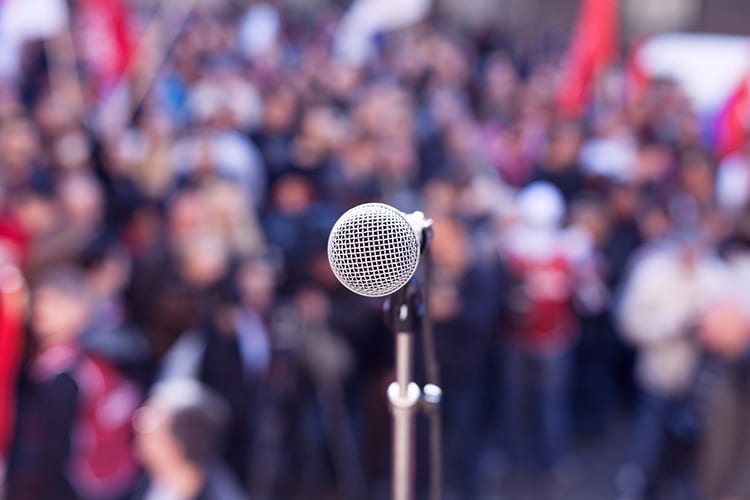With approximately 44 million Americans having reported daily feelings of loneliness, U.S. Surgeon General Dr. Vivek Murthy earlier this year declared that we are facing a “loneliness epidemic.”
Juliana Schroeder, the Harold Furst Chair in Management Philosophy and Values Professor and Barbara and Gerson Bakar Faculty Fellow at Berkeley Haas, explored this crisis in a recent TEDxMarin talk, sharing strategies to fight loneliness and live a more connected life. Schroeder is a behavioral scientist who researches the psychological processes behind how people interact and make social inferences about others.
In fact, Schroeder herself once felt plagued by loneliness. She shared that while riding public transit early in her career, she used to feel particularly disconnected from those around her. Technology is only exacerbating our loneliness, she added.
“Avoidance is easier for us than ever,” she said in her talk. “Online avoidance feels convenient, but it carries an inconvenient consequence.”
“Avoidance is easier for us than ever.”
This “inconvenient consequence” extends beyond the emotional impacts of loneliness. In fact, Schroeder noted a meta-analytic review in the journal PLOS Medicine that found sustained loneliness is potentially as harmful to human health as smoking 15 cigarettes a day.
When people refuse to interact with others and instead retreat into their tech devices, Schroeder explained, the cycle is only perpetuated.
“The paradox of loneliness is that people who are lonely don’t want others to think there is something wrong with them,” she explained. “So they further isolate themselves, creating a cycle of loneliness.”
“The paradox of loneliness is that people who are lonely don’t want others to think there is something wrong with them. So they further isolate themselves, creating a cycle of loneliness.”
Strangers on a train
Schroeder, who also holds affiliations with the Social Psychology Department, Cognition Department, and Center for Human-Compatible AI at UC Berkeley, has explored this paradox in her own research, looking at not only the causes behind the loneliness epidemic but also at potential solutions. When completing her doctorate in social psychology at the University of Chicago, for instance, she ran an experiment inspired by her own experiences on the train.
She found that people expected that talking with a stranger on the train would result in the least positive commute experience—but, in reality, it did the exact opposite. Those who engaged with others on the train reported having the most positive commute experience, leading her to beg the question: Why do people choose to avoid each other if they’d be happier connecting?
One of the main reasons, she finds, is that people tend to overestimate the social risk that comes with connecting with others. Citing the rule of social reciprocity, however, Schroeder noted that nearly all participants received a response when engaging with another person on their commute.
Fostering deeper connections
Curing loneliness is about more than just making small talk—it also requires establishing deeper connections with colleagues, friends, and more. In another study published in the journal Psychological Science, Schroeder found that the medium through which communication occurs is crucial to its quality. That is, voice-based communication like in-person and phone conversations—as opposed to text-based communication like texting, emailing, or DMing on social media—changes how words are received and understood, influences word choice, and affects the synchronicity of exchanges.
In fact, research suggests voice conversations enhance brain wave and heart rate synchrony—the neurological and cardiovascular evidence of psychological alignment.
“Combating loneliness means making the deliberate choice to connect when all you want to do is avoid,” Schroeder concluded. “These choices might feel small, but in aggregate, they have the power to change us from feeling lonely to feeling connected.”





 When a Starbucks employee recently called the police on two black men who asked for a bathroom key but hadn’t yet ordered anything, it seemed a clear-cut case of racism leading directly to unfair treatment. Many outraged white customers publicly contrasted it with their years of hassle-free Starbucks pit stops.
When a Starbucks employee recently called the police on two black men who asked for a bathroom key but hadn’t yet ordered anything, it seemed a clear-cut case of racism leading directly to unfair treatment. Many outraged white customers publicly contrasted it with their years of hassle-free Starbucks pit stops.

 In
In 

 With primary season just around the corner, voters will soon start hearing a familiar refrain: “I’m Candidate X, and I approve this message.” Since 2002, federal law has required the tagline on all ads paid for by candidates for federal office.
With primary season just around the corner, voters will soon start hearing a familiar refrain: “I’m Candidate X, and I approve this message.” Since 2002, federal law has required the tagline on all ads paid for by candidates for federal office.
 Judging moral character: A matter of principle, not good deeds
Judging moral character: A matter of principle, not good deeds Truth or consequences? The negative results of concealing who you really are on the job.
Truth or consequences? The negative results of concealing who you really are on the job.